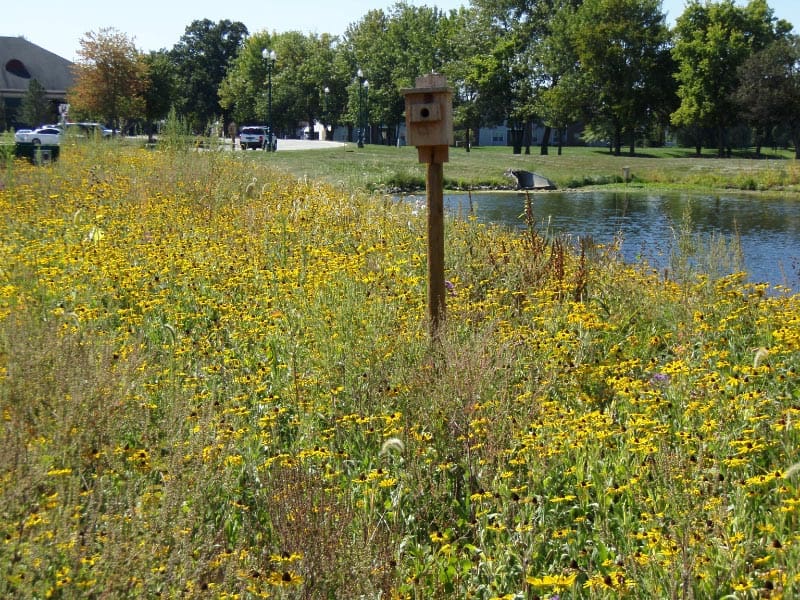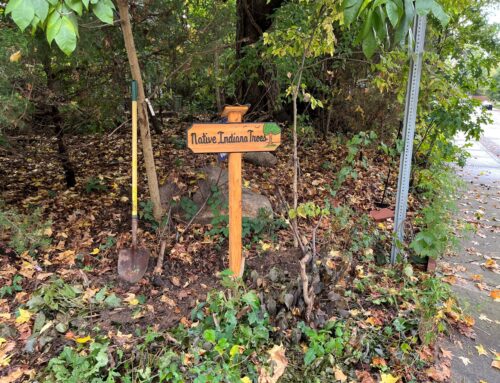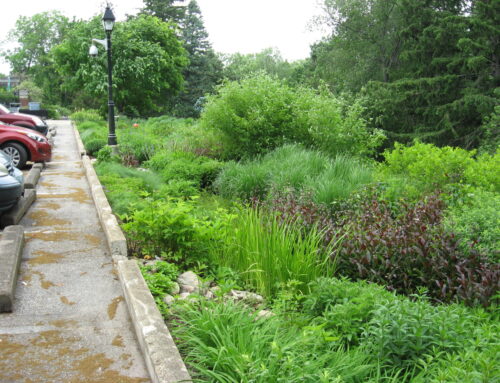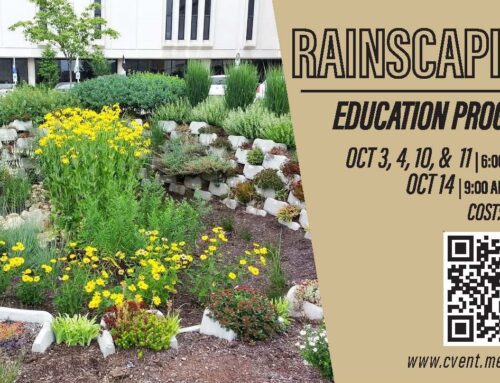By: Julie Farr, Urban Conservationist
Now at the height of summer we are enjoying and spending more time in our yards than any other time of the year. Many of us spend a lot of money trying to keep our yards looking pristine and weed free. Fertilizer and herbicides are often applied up to 6 times during the growing season. Beyond the cost to your wallet and possible health issues for children & pets is the cost of traditional lawn care to the environment. Changing lawn care habits can help improve the condition of our wallets and the environment.
Habit #1 – Mow High with a Mulching Mower
Raising your mower to cut at 3-4” will encourage deeper root growth, strengthening the grass and decreasing the amount of water needed to keep it healthy. Using a mulching mower and returning cut grass to the lawn will decrease the amount of nitrogen fertilizer needed by up to 1 pound per 1,000 square feet.
Habit #2 – Test Your Soil
Soil tests allow you to assess how much fertilizer you actually need. Phosphorous is a major water contaminant added to most fertilizers which soil tests often show is not needed for an established lawn.
Habit #3 – Adjust the Time & Frequency of Lawn Treatments
Use slow release forms of Nitrogen. Delay spring and fall applications which will more efficiently utilize the fertilizers and decrease the number of applications. Utilize phosphorous free fertilizers (Zero will be the middle number).
Habit #4 – Minimize Runoff to Streams & Ponds
Sweep excess fertilizer back onto the lawn. Create 50 foot buffers where you do not fertilize along creeks and ponds. Planting these areas with deep rooted native plants rather than turf grass will further help in filtering water before it reaches the stream or pond. Taller plants will discourage geese (and their feces) from these areas.
Habit #5 – Switch to Natural or Organic Lawn Care Products & Methods
Switching from traditional to organic lawn care is a long process but well worth the effort as it improves soil health, decreases pollutants and provides a safer environment for those with sensitivities to synthetic chemicals. There are many natural and organic alternatives on the market today.
For more in depth information and further resources visit our website at https://marionswcd.org///lawn-and-garden/.







